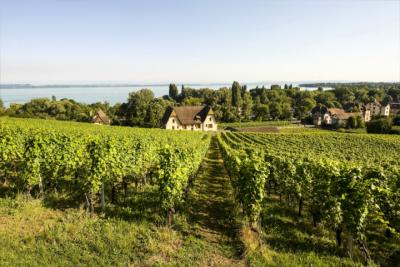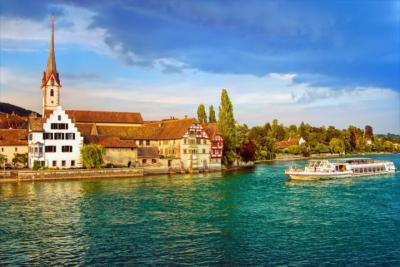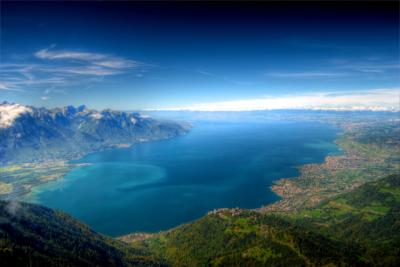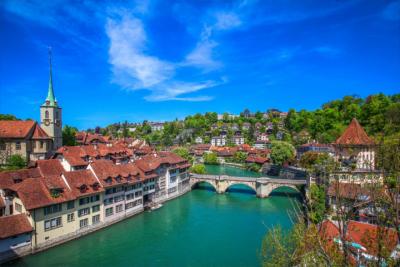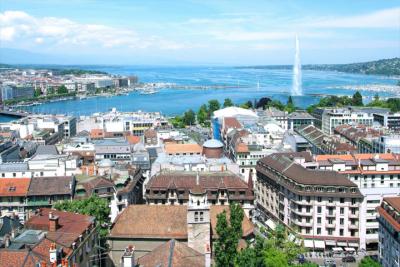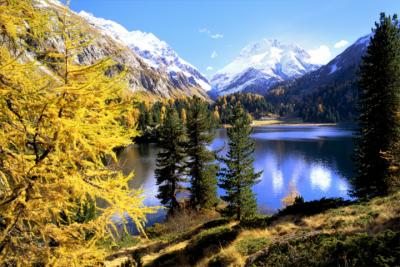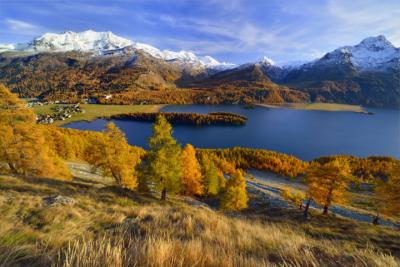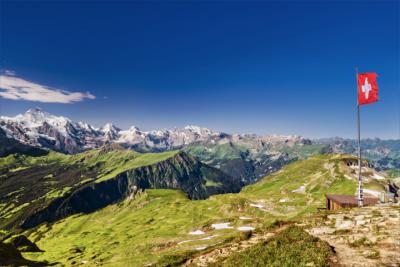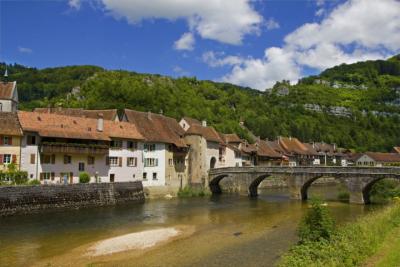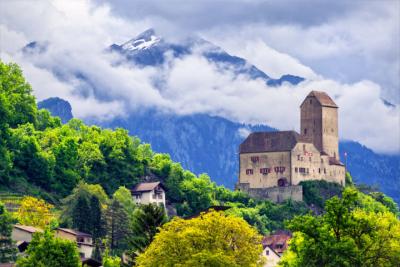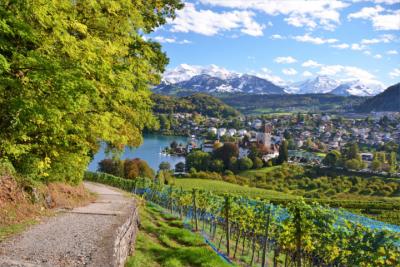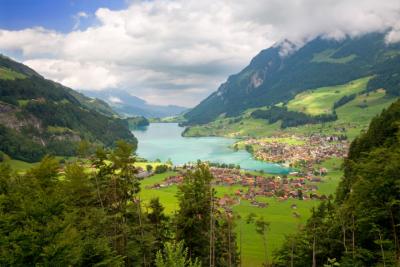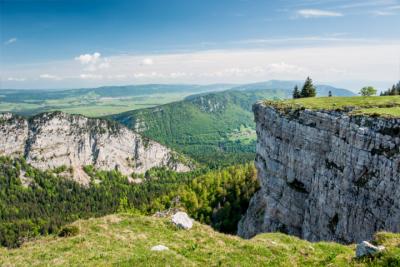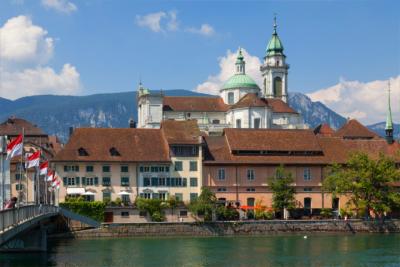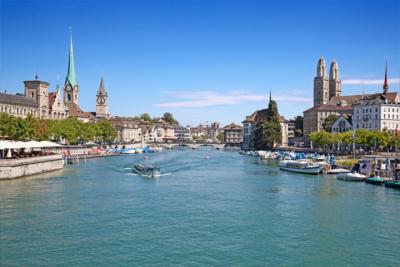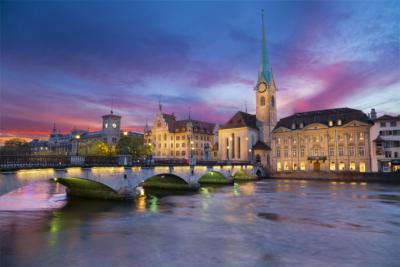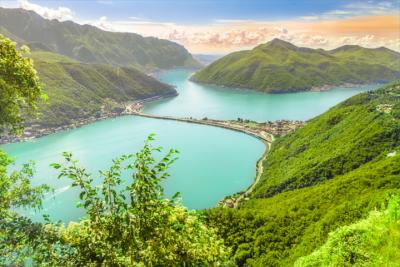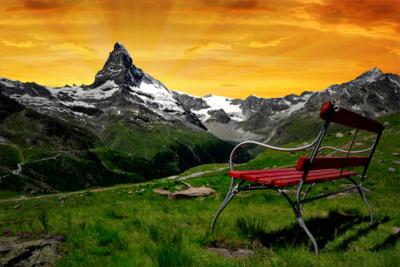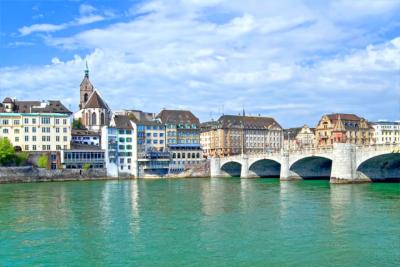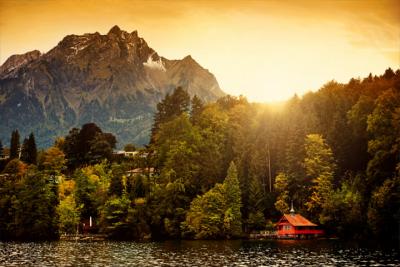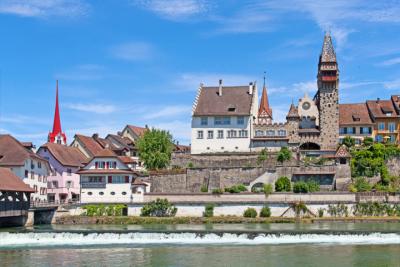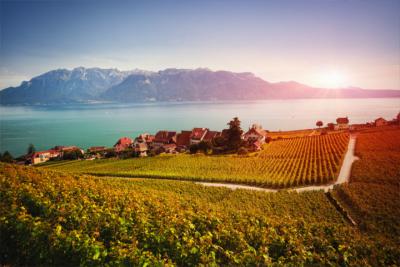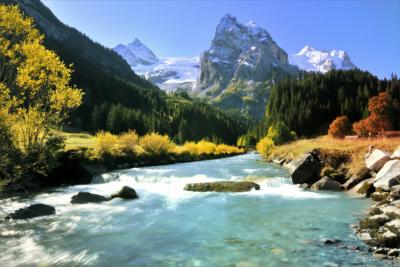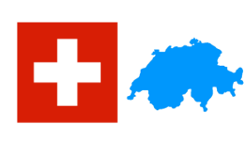Travel Offers
Travelmyne Featureprint
Distance
Switzerland - Mountains, Snow and Tradition
Impressive mountains, smooth meadows and scenic lakes - Switzerland undoubtedly has a wonderful, idyllic landscape. This attracts wealthy and popular people from all over the world. With its many appealing places, Switzerland certainly offers a classic setting to relax or dive into the Swiss culture. The latter is reflected not only in magnificent buildings but also in a range of traditional products such as the famous Swiss cheese or high quality pocketknives and watches.

Geography - The Alps dominate the landscape
In the centre of Europe lies the small landlocked country Switzerland, which is 220 kilometres long and 350 kilometres wide. Nearly half of its area is dominated by the mighty mountains of the Alps, another twelve percent is dominated by the Alpine foothills. In the north, this area is connected to the midland, which has heights of about 1,500 metres, and the equally impressive range of the Jura mountains. Among the many massive mountains in this country, the Monta Rosa (4,634 m) is the highest peak. Climate and weather often differ considerably in Switzerland in the north and south and even within regions. In principle, temperate Central European climate (average temperatures between 3 and 23 °C) prevails north of the Alps, while there is Mediterranean climate south of the Alps.

Nature - Lush alpine meadows, thick forests and icy glaciers
Switzerland's numerous mountains are to a great extent vegetated by thick woodlands, which mostly consist of pines, firs, spruces and larches. In the flatland you also find broadleaf forest. In addition, lush meadows and fields cover the hillsides and create a contrast to harsh gorges and rocks. At the summit of the gigantic mountain there is a sparse world with many glaciers. Lynxes, bears, wolves, beavers and Alpine ibexes reappear in some places after they were temporarily not to be found in Switzerland. Other common animals are foxes, chamois, deer and boars. Furthermore, Switzerland is populated by many birds such as falcons, buzzards, barn owls, snow chickens, quails and partridges.

Natural sights - Climb massive mountains and relax at scenic lakes
Among the many gigantic mountains in Switzerland, the Matterhorn (4,478 m) stands out as the most famous one. It is one of the country's highest peaks, has a distinct, unique summit and is surrounded by a beautiful landscape. From Zermatt you can explore the mountain by taking a hiking or climbing tour (for example by walking over the well-known Hörnli ridge). For such a trip, you can use cable cars to reach Klein Matterhorn or Gorner ridge. The Gornergrat Railway operates at a height of about 3,100 metres and offers a fantastic view of the alpine world. The Gornergrat is also very popular with winter sports athletes. Switzerland's most famous mountain trio is probably constituted by the mountains Eiger, Jungfrau and Mönch near Grindelwald. It is possible to hike, ski, luge and do many other activities in a fantastic landscape. Between Mönch and Jungfrau there is the Jungfrauchjoch, which has the highest station in Europe. From there, you have a breathtaking view of the Aletsch Glacier, which is 23 kilometres long and deep blue. It constitutes an impressive example of a world made of everlasting ice and is the longest glacier in the Alps. Genuinely spectacular is a trip to the ice stand near Saas-Fee. Via metro you can reach the ice stand and get an insight right into the Fee glacier. Another of Switzerland's nature wonders are the Rhine Falls near Schaffhausen. With a width of 150 metres and a depth of 23 metres, it is Europe's greatest waterfall. From Laufen Castle you have a wonderful view of this natural spectacle. Truly unique sights are also the Hölloch, which is Europe's second longest cave system with 200 kilometres of length and the Lac Souterrain, the largest natural undergorund lake in Europe. You can also experience the beautiful landscape on a stroll through the Swiss National Park, where you will encounter meadows, lakes gorges and interesting rock formations. Besides mighty mountains, Switzerland has scenic lakes which constitute first rate holiday destinations. One of them is Lake Geneva, the country's greatest lake. Its hillsides are covered in grapevines and from the water you have a great view of the impressive Mont Blanc in France. Lake Constance between Germany and Switzerland is only slightly smaller. With its idyllic landscape, Lake Constance also offers various opportunities to relax. Worth mentioning are also the lakes Lago Maggiore at the border to Italy (known for its Mediterranean atmosphere), Lake Lucerne (the ideal location for hiking and skiing) and the Lake Zurich (flows through the river Limmat into the city and offers beautiful waterside promenades).
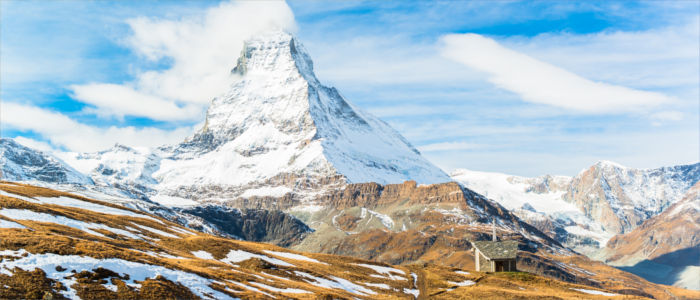
Culture - A multicultural nation in the footsteps of Wilhelm Tell
Officially, the country calls itself Swiss Confederation. It was constituted from the so-called original cantons Uri, Schwyz and Unterwalden. This union of the three cantons was first documented in 1291. The ongoing fight against foreign rule is depicted in the myth written by the freedom fighter Wilhelm Tell, who was forced to shoot an apple off his son's head according to legend. After he had succeeded, he killed the duke who had made him do it. Since 1848 Switzerland has existed in its current structure with 26 relatively independent cantons. The country is characterised by its system of civic involvement, which makers it possible for the population of eight million people to influence political decisions in a very extensive and direct way through referendums. Switzerland is also known for its neutrality, which is based on a resolution from 1647 and caused the country to stay impartial in many international crises in the past. The country is also characterised by its mixed population, which has many different linguistic, cultural and ethnic origins and consists of 24 percent of foreigners. Last but not least, Switzerland is known for many products: watches, pocketknives, cheese, Lindt chocolate and the Swiss banking industry.

Cultural Sights - Zurich, Lucerne or St. Gallen are wonderful destinations
One of Switzerland's most radiant cities is Zurich, the country's biggest city but still a placid place. Lake Zurich and the river Limmat built beautiful waterside promenades. The historical atmosphere is created by sights like the church Grossmünster with its two prominent towers, the Renaissance town hall, the town square Münsterhof, the Fraumünster church, which holds stained glass windows designed by the painter Marc Chagall, and the magnificent guildhalls. At the same time, Zurich is very trendy and represents what is popular and smart internationally. Especially regarding lifestyle, the city does not disappoint. In the noble, wealthy metropolis people meet to go shopping in the beautiful Bahnhofsstraße or to take a boat to relax on the water. The longstanding restaurant Zeughaus at the Paradeplatz is the best example for the country's exquisite cuisine. Another classic city located in the middle of wonderful lakes and mountains is Lucerne, which lies on a branch of Lake Lucerne. As a result, the city is crossed by scenic waterways and at their riversides you can take a walk or stop in at one of the local cafes. It is also a good idea to take boat trip, during which you experience the mixture of beautiful nature and impressive architecture. There are numerous fascinating historical buildings and many bridges with towers, of which the Kapellbrücke is the most famous one. The roofed wooden structure, which is about 200 metres long, is the city's landmark. Among its roof, you find beautiful, colourful paintings. After a stroll over the bridge, you can go and see the old water tower nearby and the Renaissance town hall. A highligt which is unique in Europe is the Swiss Museum of Transport. With over 3,000 exhibition pieces in twelve buildings, it presents a comprehensive overview of the former and current world of transport and communication, from the historical race car to the Lamborghini to space travel. In addition, the museum houses the Swiss Arena, a huge, walkable aerial image of Switzerland. Not far from Lucerne, several monuments bear witness to the fight confederates fought for freedom during the last centuries. As a federal city, Bern constitutes what comes closest to a capital in Switzerland (since the country does not have a capital). The city is famous for its medieval historical part of town, many museums and the art collection with works of the painter Paul Klee. There are two things which are specific to Geneva: its great location and its cosmopolitan character. The city lies at the river Rhone and at Lake Geneva, surrounded by a fantastic scenery of mountains. Over 200 international organisations are based here, among others the European headquarters of the United Nations (UN), the German Red Cross and the World Health Organization (WHO). Geneva's landmark is the water fountain Jet d'Eau on Lake Geneva, which is 140 metres high. The city also has a historical part of town with winding, cobblestone alleys and the St. Pierre Cathedral. Geneva also holds numerous art galleries and museums with the clock and art museum as especially worthwhile examples. In the east of Switzerland at the river Steinach, there is another world-famous tourist destination: St. Gallen with its Benedictine abbey. It was founded by Irish itinerant monks in the seventh century. The former abbey library, which holds an ostentatious baroque reading room, is especially significant and an architectural treasure. The collection of writings and exhibits (for example an Egyptian mummy) inside the reading room is unbelievably valuable. You can experience even more of Switzerland if you take a trip to Basel (first class internationally renowned modern architecture and artworks) and Montreaux (romantic castle from the 13th century, famous jazz festival at Lake Geneva).

Experience - A must: taste Swiss cheese
It is one of the most famous trains in the world: the Glacier Express, which runs between the fashionable tourist locations Zermatt and St. Moritz. Since 1930, the train has run the route and passed 91 tunnels and almost 300 bridges on its way. In the panorama coaches you have a spectacular view of the Swiss mountains. Romantics should take a seat in the historical dining car. In this way, you also get an impression of the Swiss cuisine, which is traditionally characterised by potatoes and dairy products. Especially Swiss Cheese is world-famous, from Appenzeller to Emmentaler. Often, you can also enjoy this traditional cheese as raclette. Other Swiss specialities are Rösti (fried potatoes), sausage such as Knackerli or Landjäger and fish from the lakes. Popular desserts are Gugelhupf cake, Fasnachtsküchli (pastry with powder sugar) and the famous Swiss chocolate. The Sprüngli-Stammhaus, which is located in the Bahnhofstraße in Zurich, is a great place to taste Swiss chocolate. Wines from Switzerland are regarded as exquisite and are hard to get outside the country. Those who want to try them and know more about their production should take a trip to Wallis, where you can walk through scenic grapevines and visit the vintners' wine cellars afterwards. Those who like to go shopping, will also get their money's worth in Switzerland – from fashionable boutiques to souvenir shops. Typical souvenirs are Sennen caps, high-class watches, chocolate, cheese or Swiss knives. The country also has evening entertainment to offer: from the typical cultural programme or the classic club to the exuberant aprés-ski party.

Activities - A paradise for winter sports
The impressive mountains with their scenic landscape offer the perfect conditions for outdoor activities. There are numerous routes for hiking, climbing and mountain biking. Furthermore, Switzerland is one of the most popular European countries for winter sports because it offers a number of first class pistes, which are covered in glistening snow and provides a vast range of tourist offers. The best place for skiing is St. Moritz, where international stars and celebrities meet to enjoy themselves. Besides these typical activities, you can also go bungee jumping.

Information
Zurich (ZRH), Bern (BRN), Genf (GVA) and Basel (BSL) have international airports. From Europe, Switzerland can easily be reached by car but drivers need a vignette for the motorway. You can also take a train. Car and train are the best options for travel inside the country. Switzerland has four official languages: German, French, Italian and Rhaeto-Romanic.
Switzerland's fantastic alpine world is especially popular with winter sport athletes. At the same time, the landscape is suited for people who want to relax actively in nature, for example on hiking or climbing tours. In addition, the country has many historical buildings and treasures, which are the destinations for lovers of culture from all over the world.

